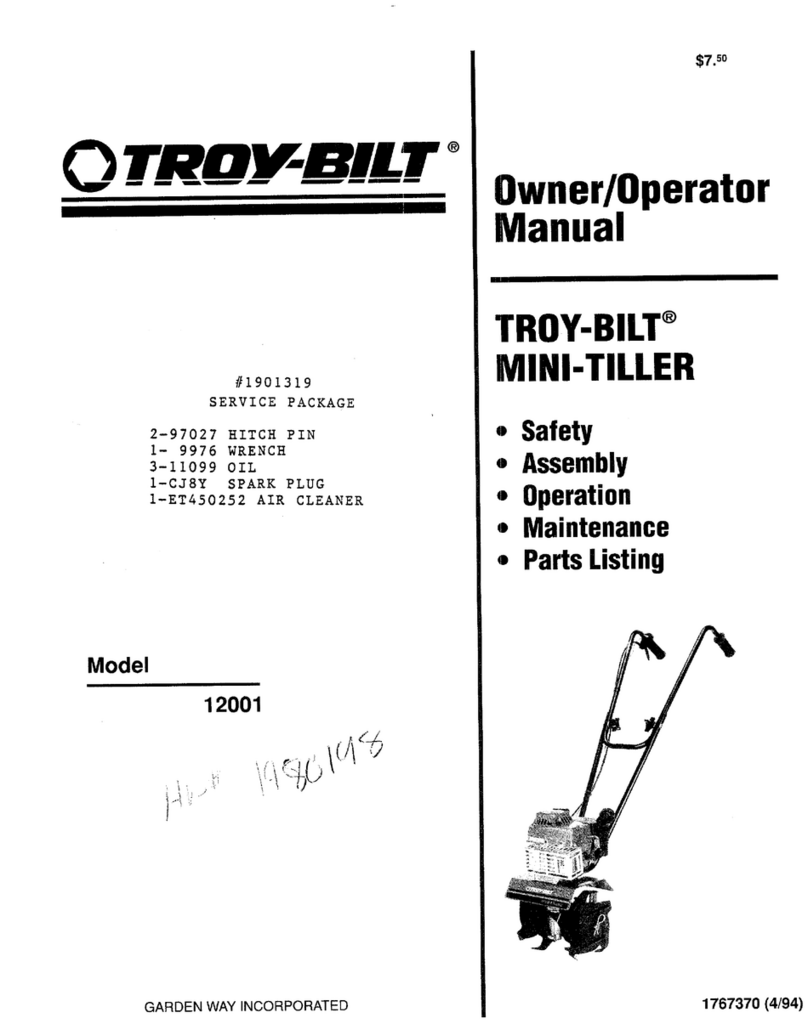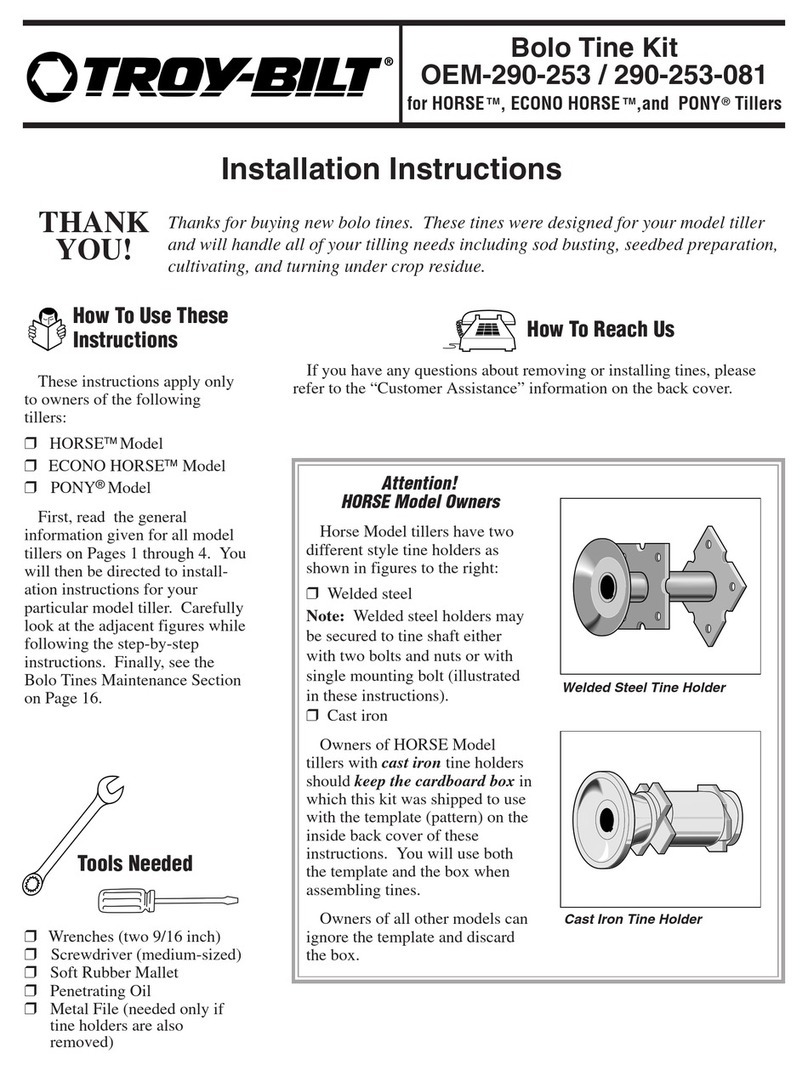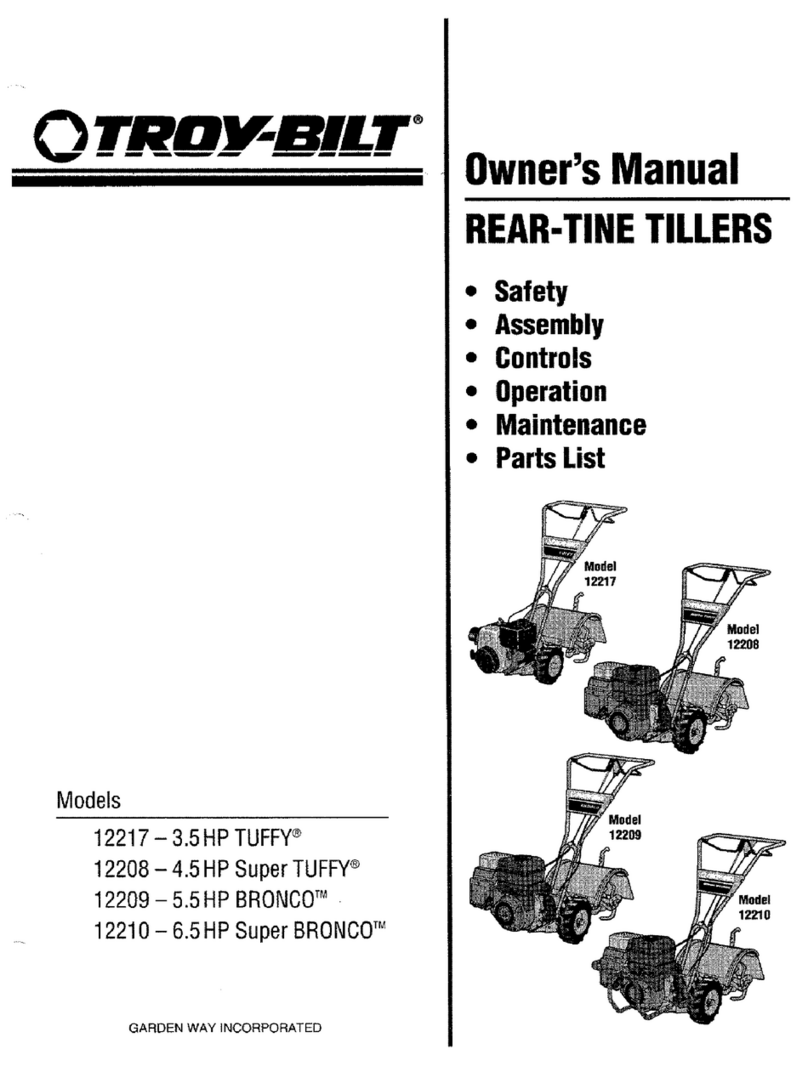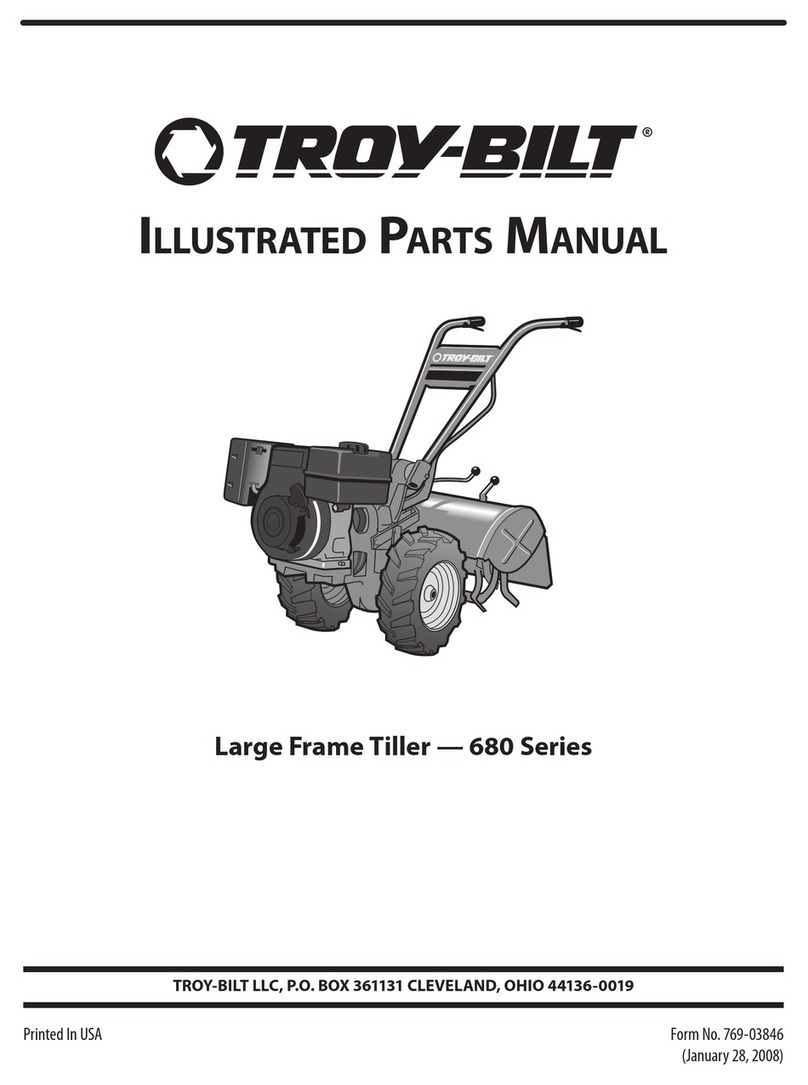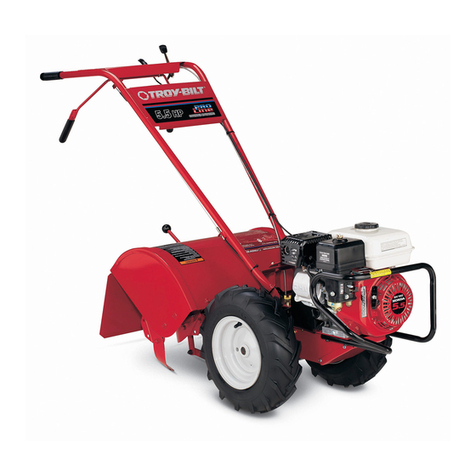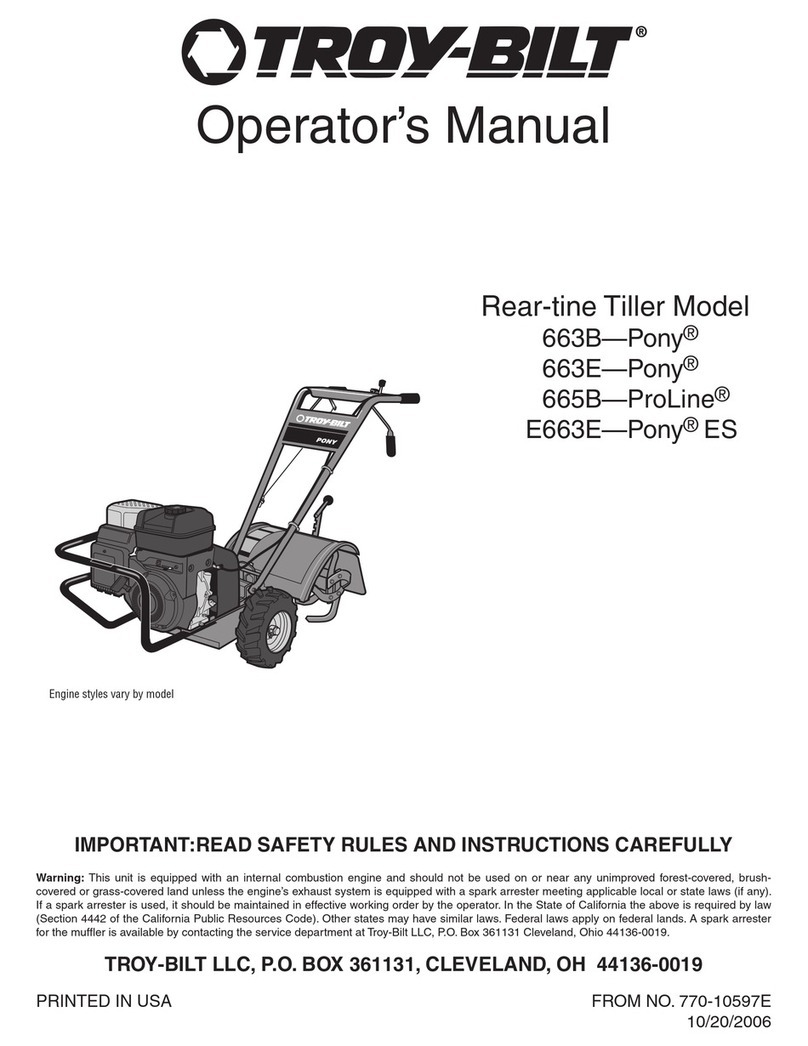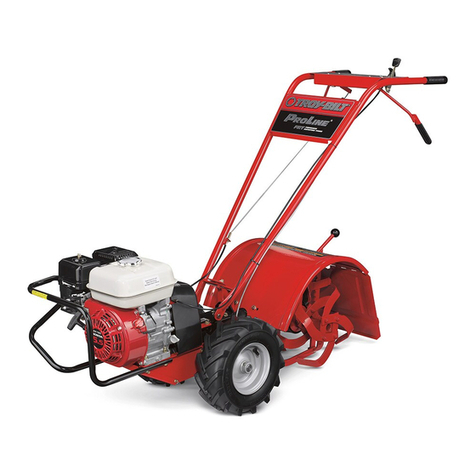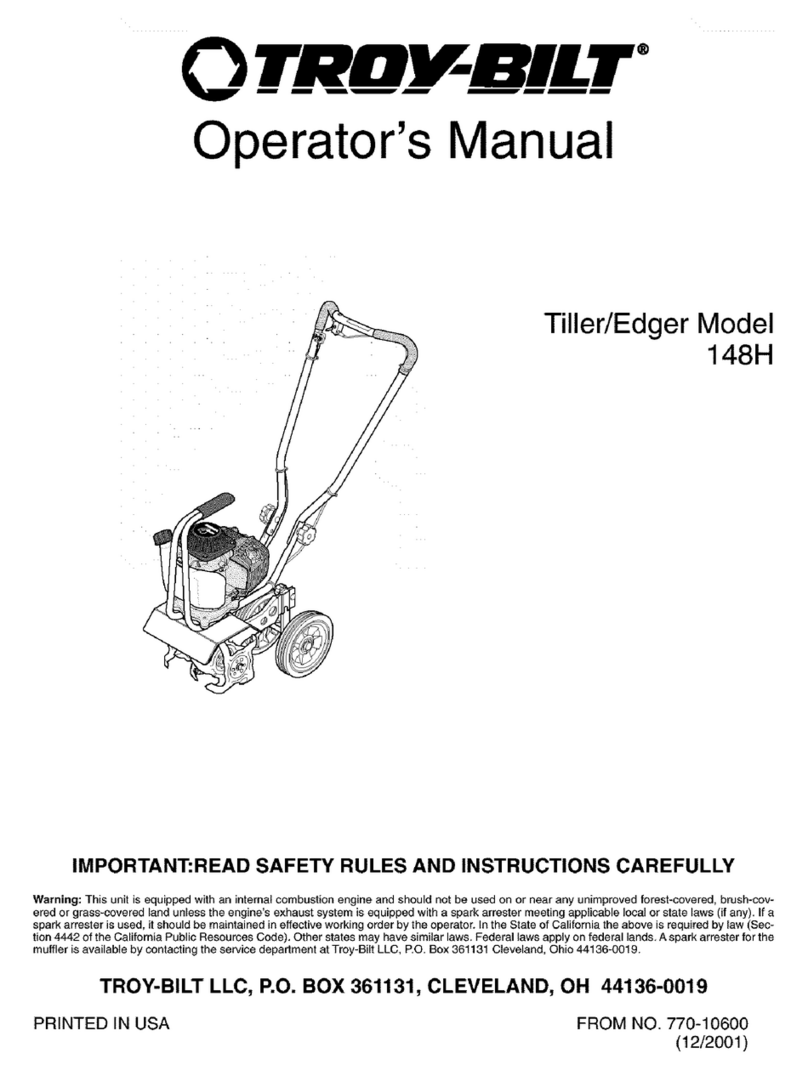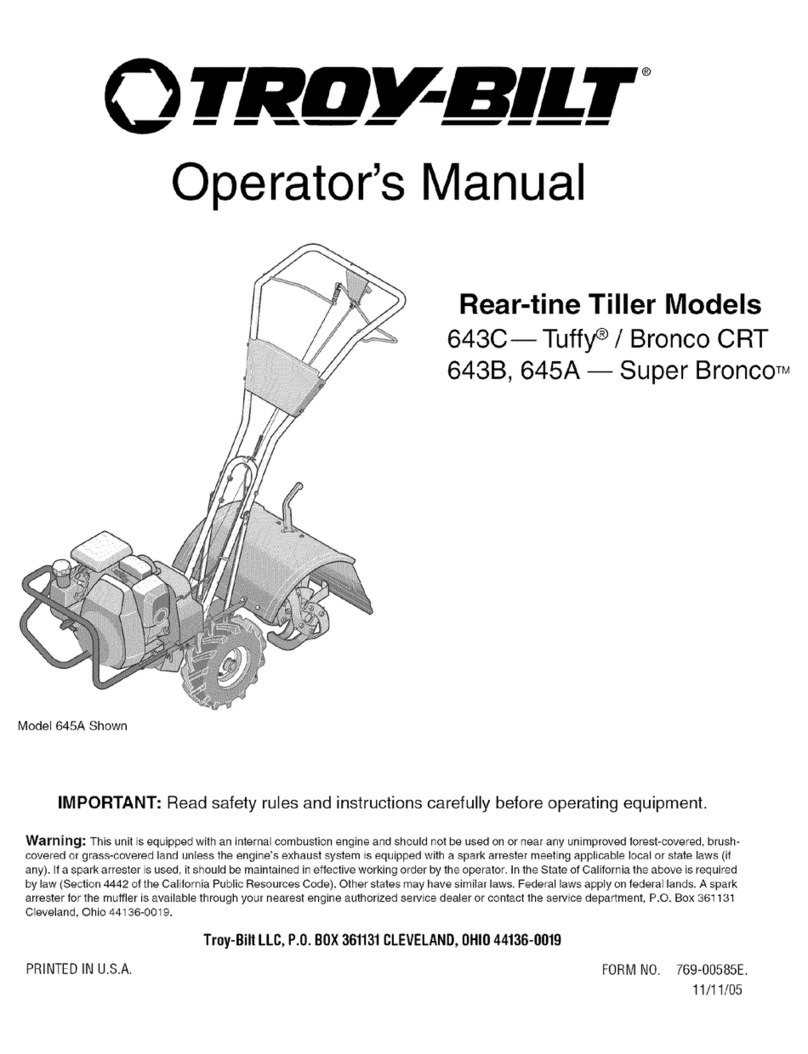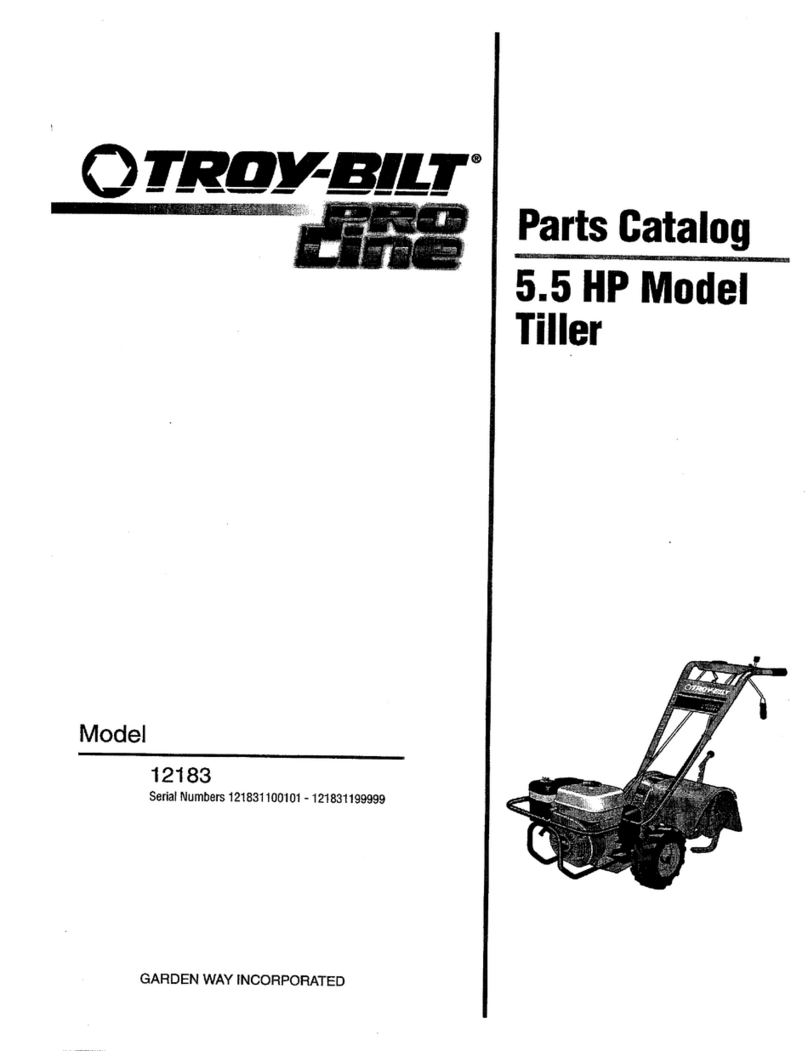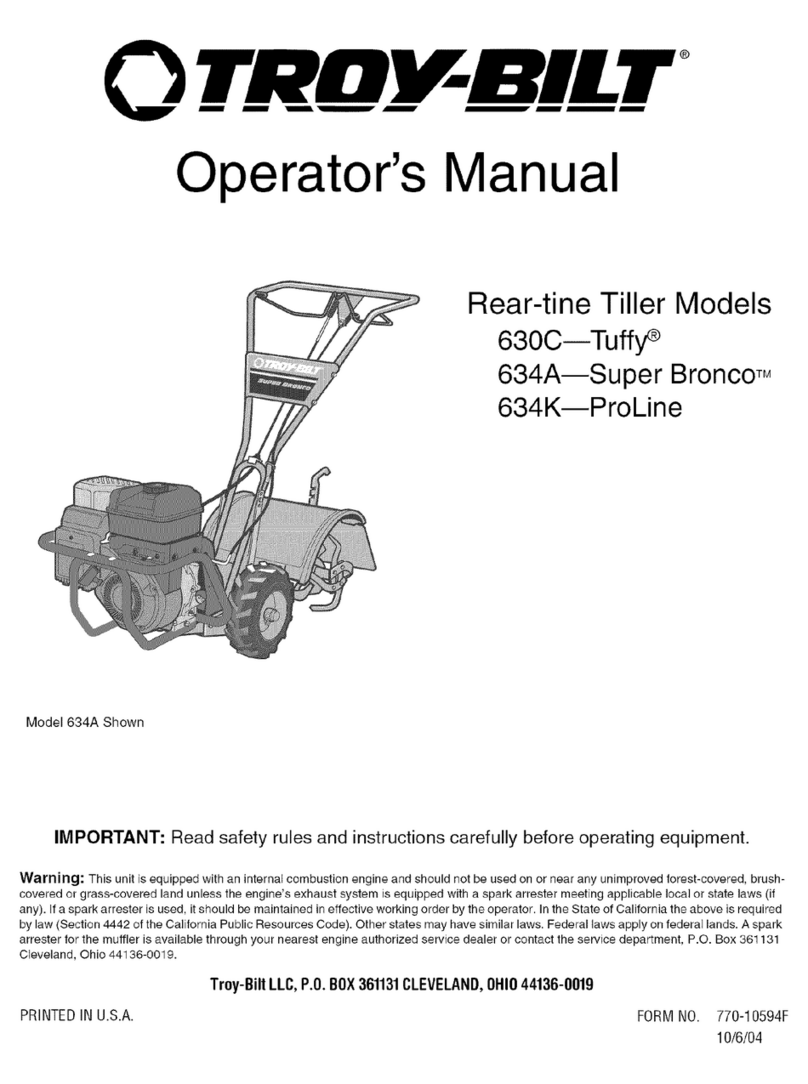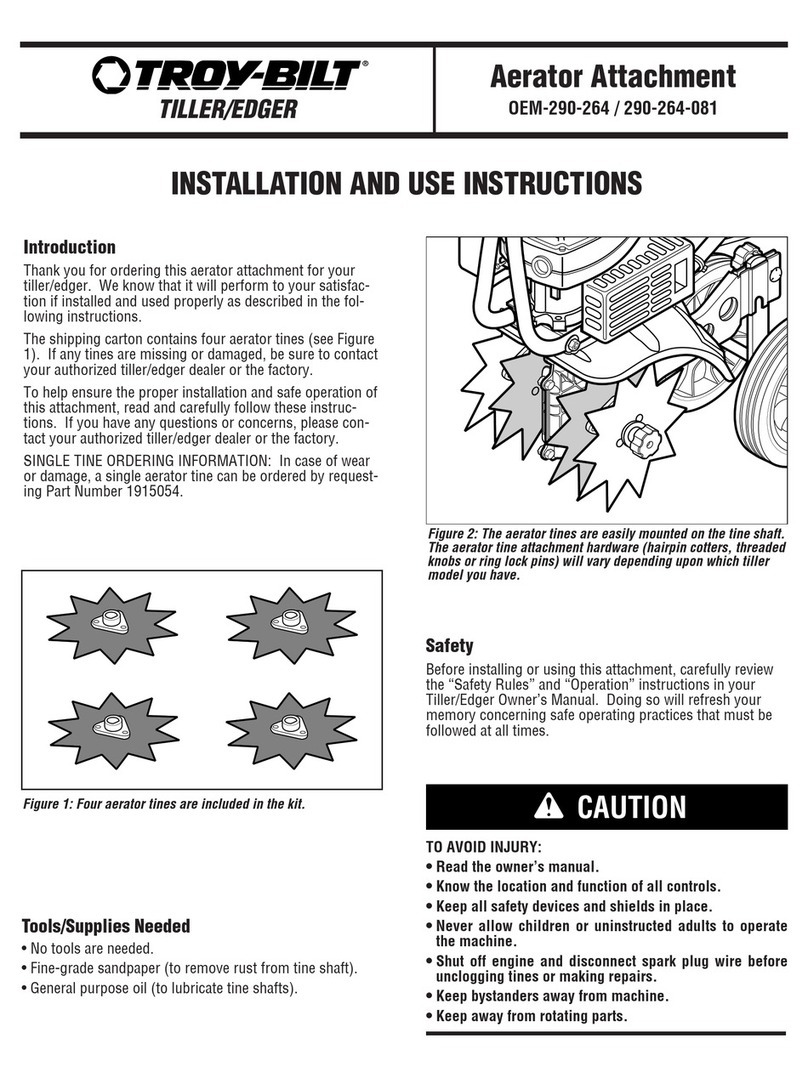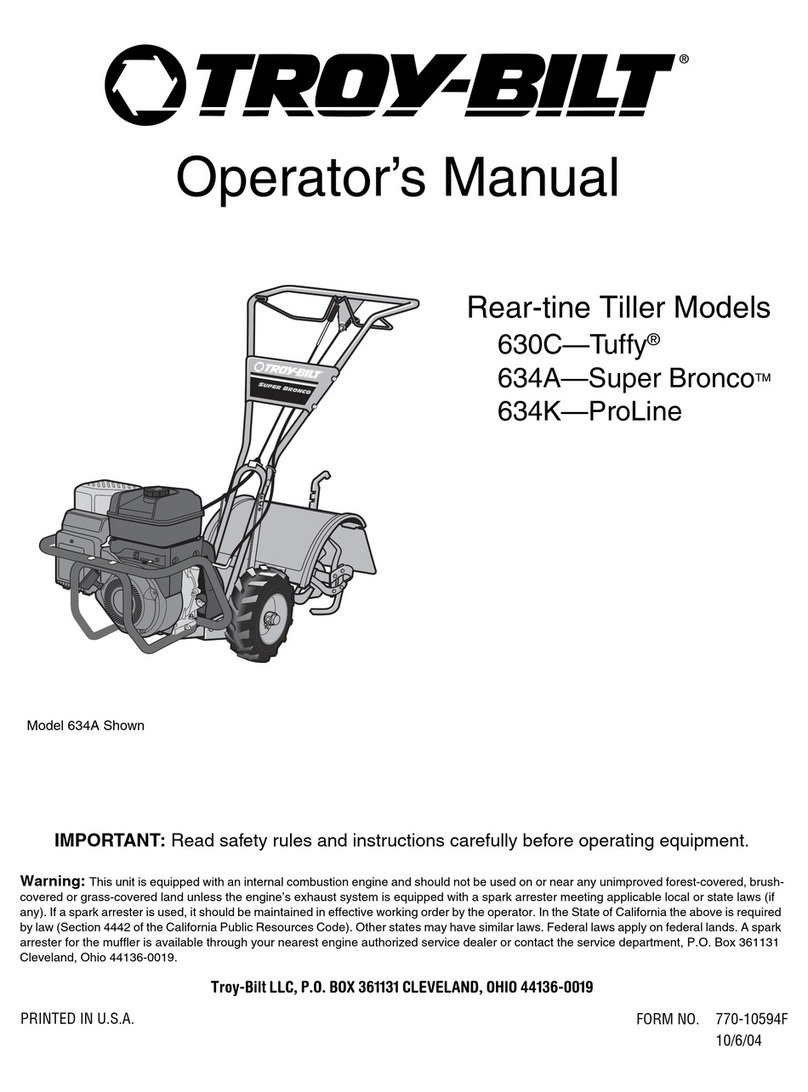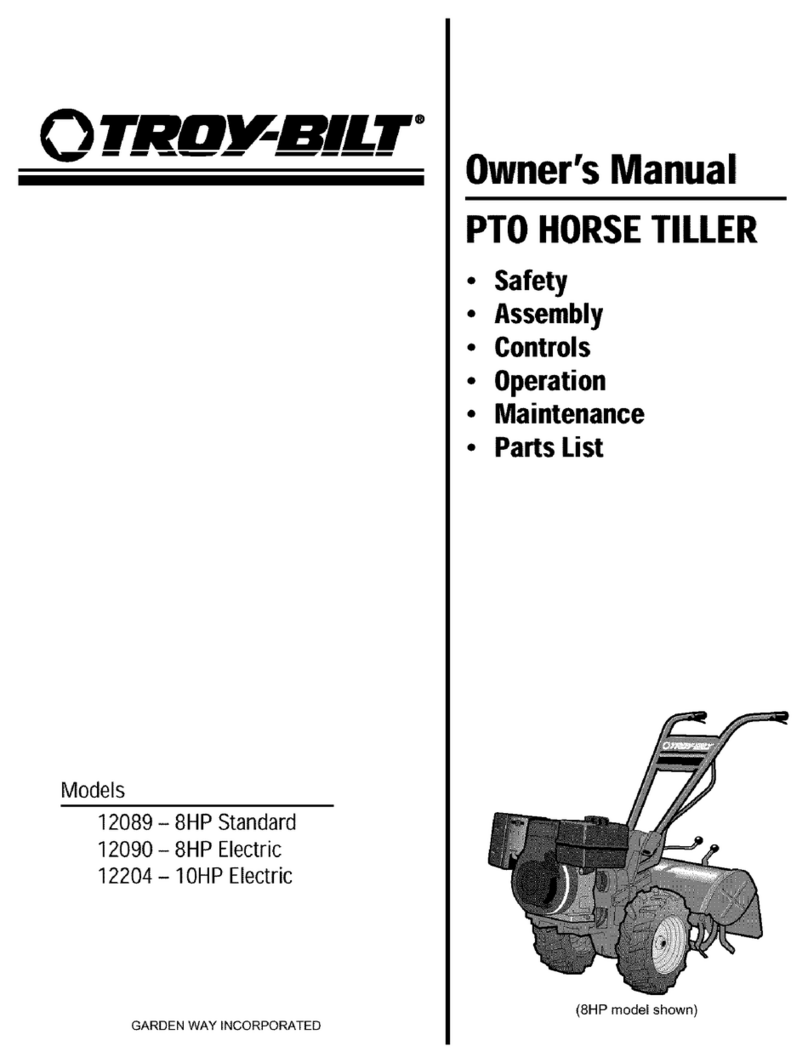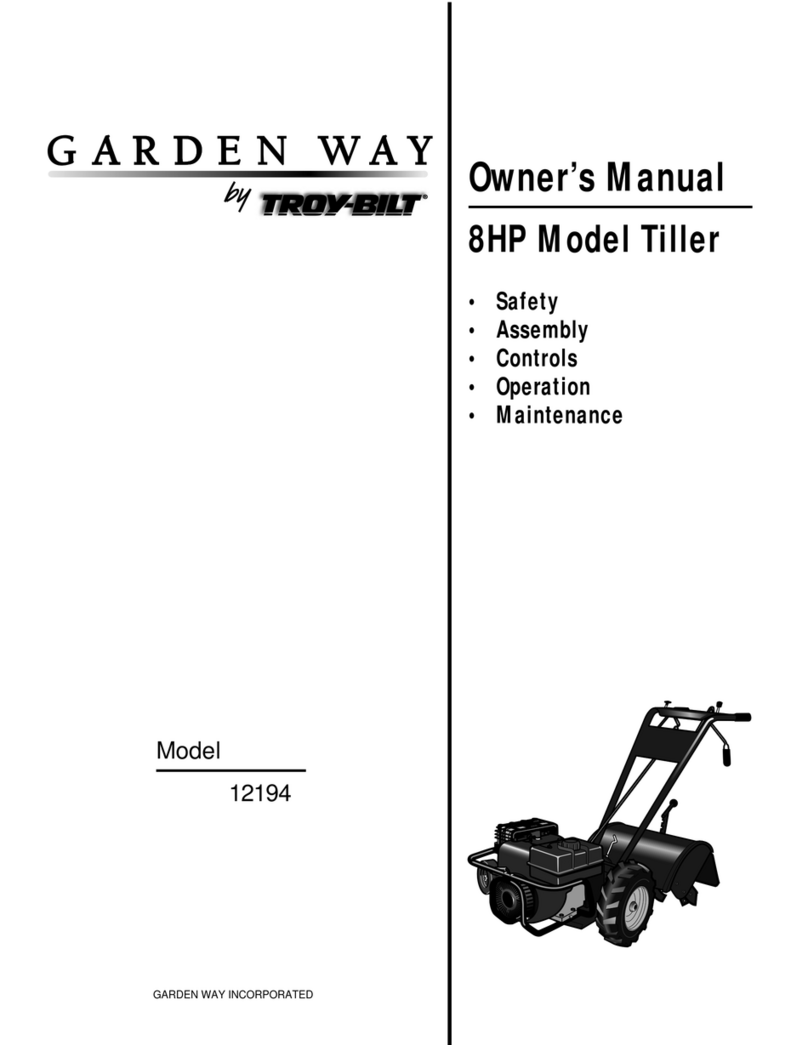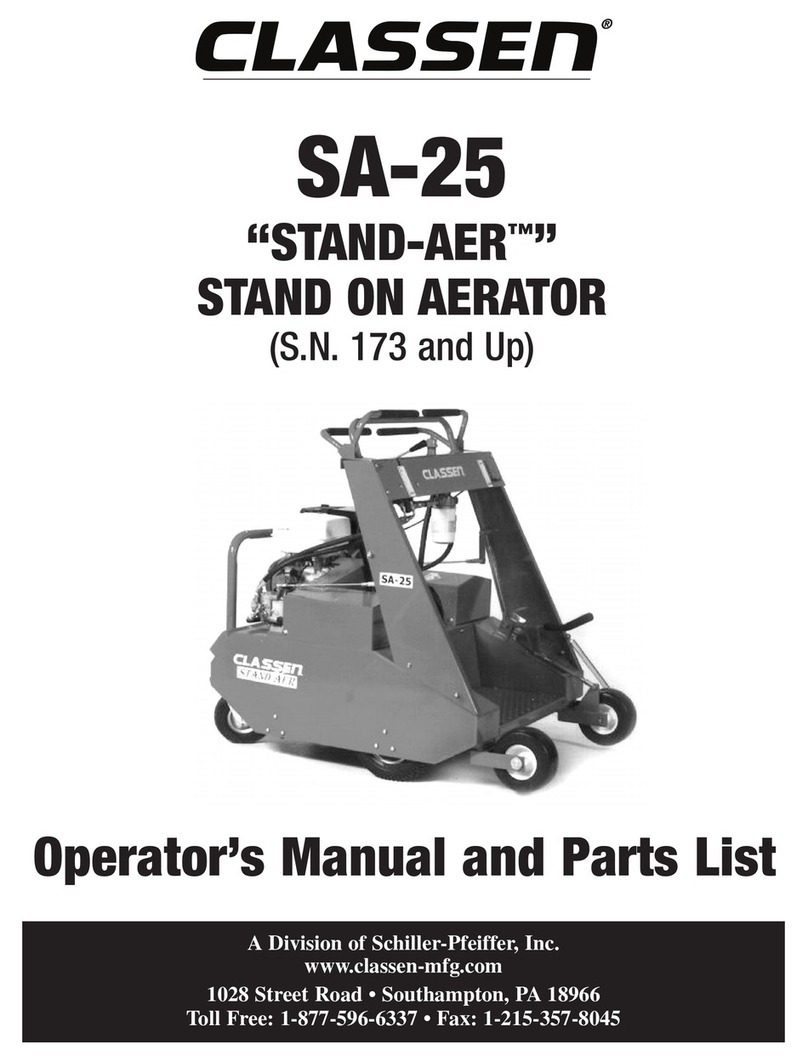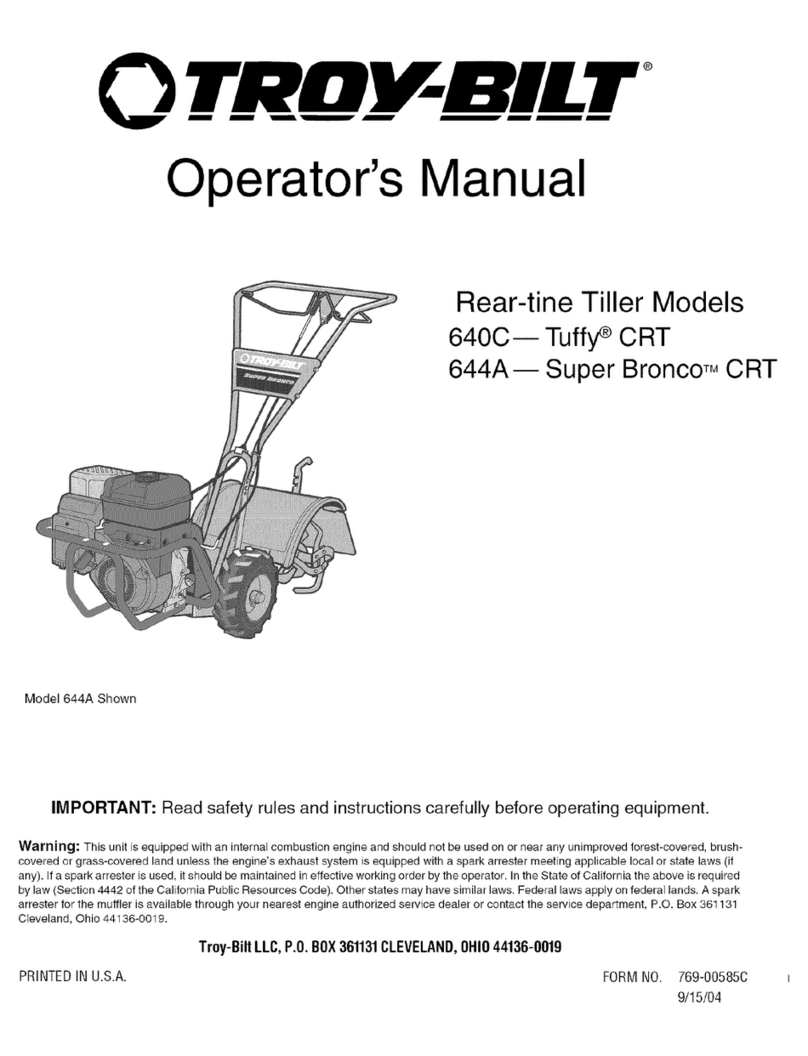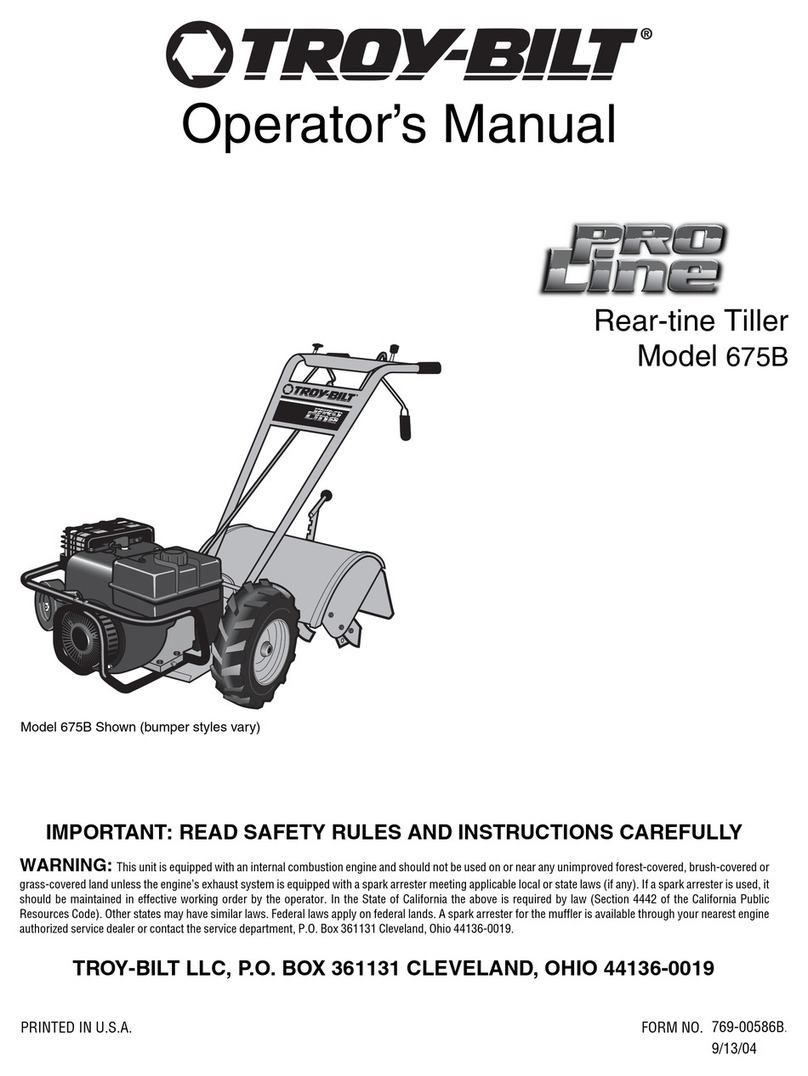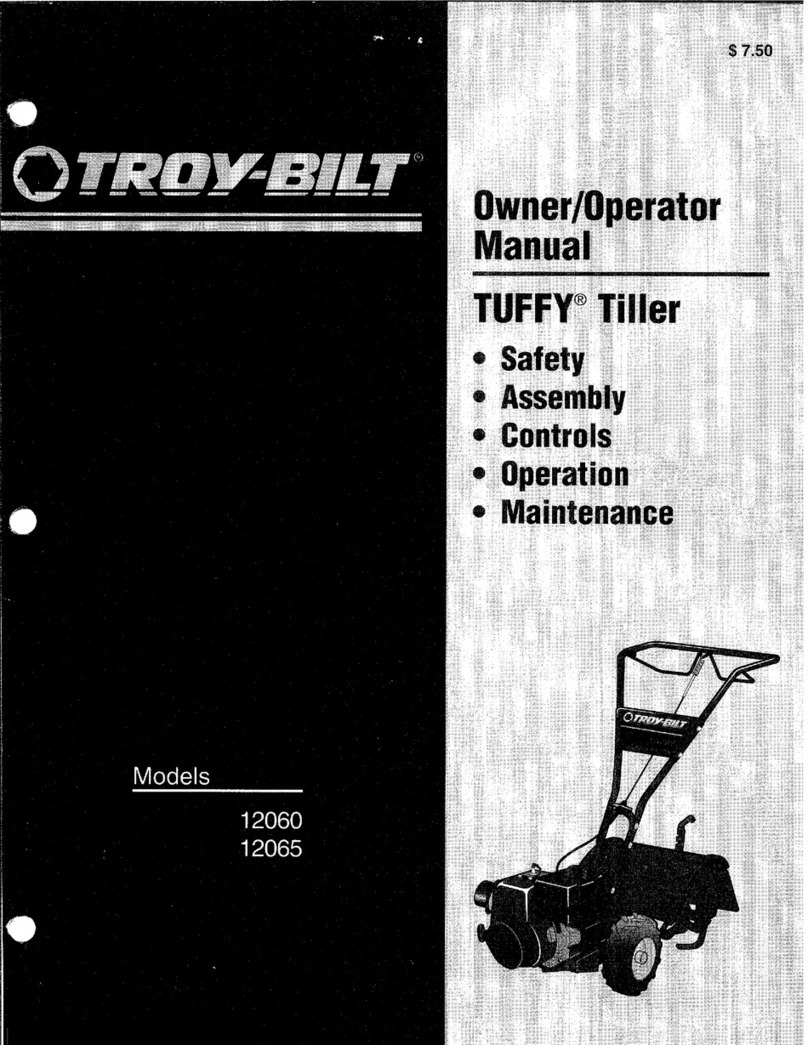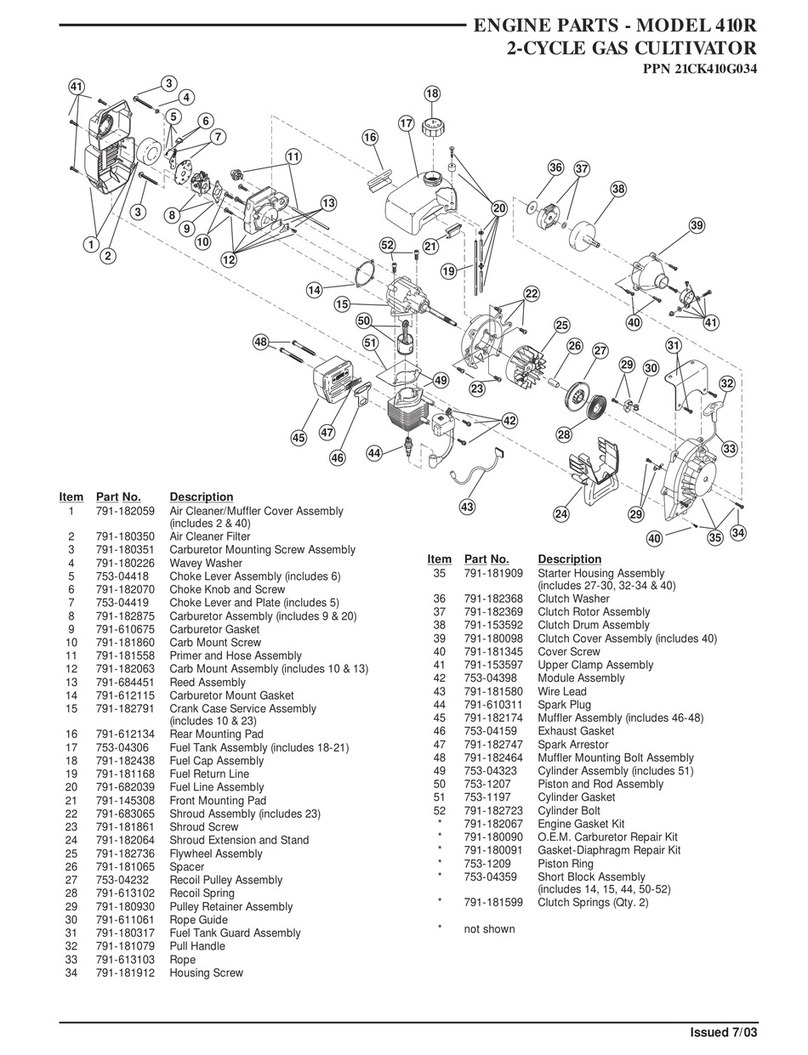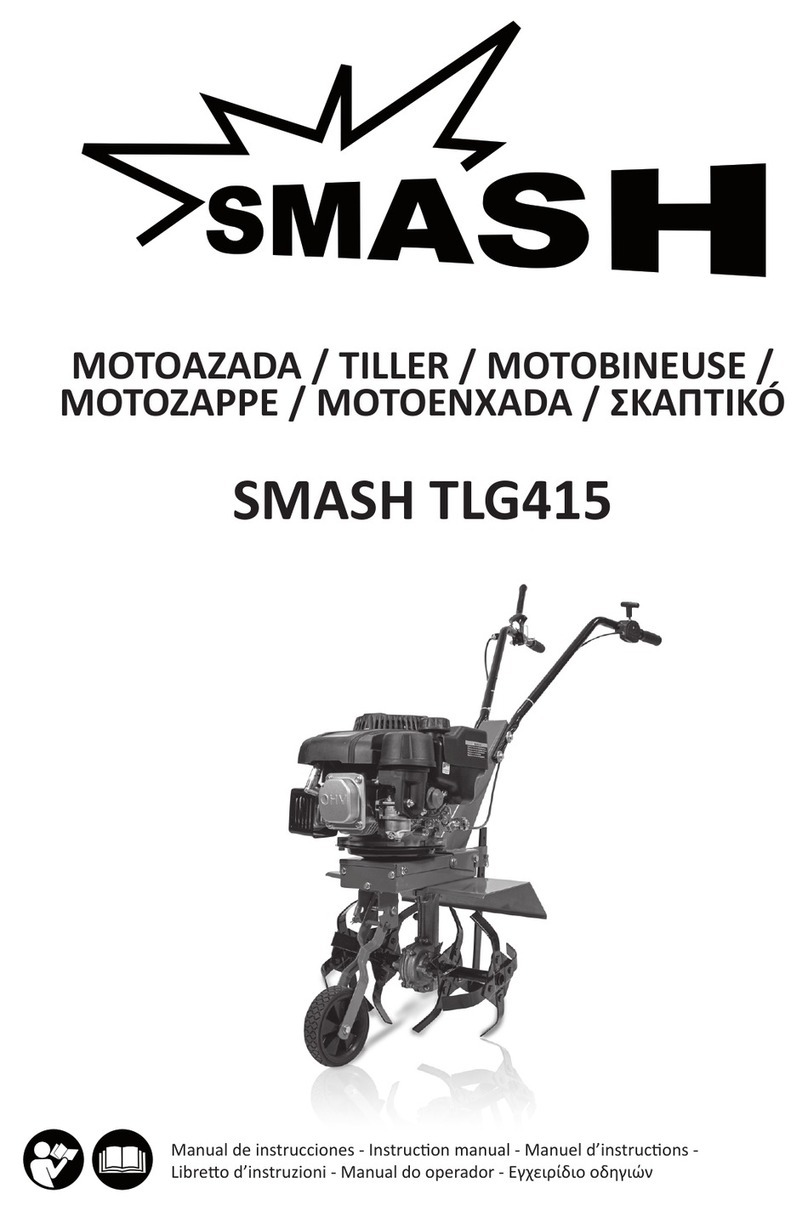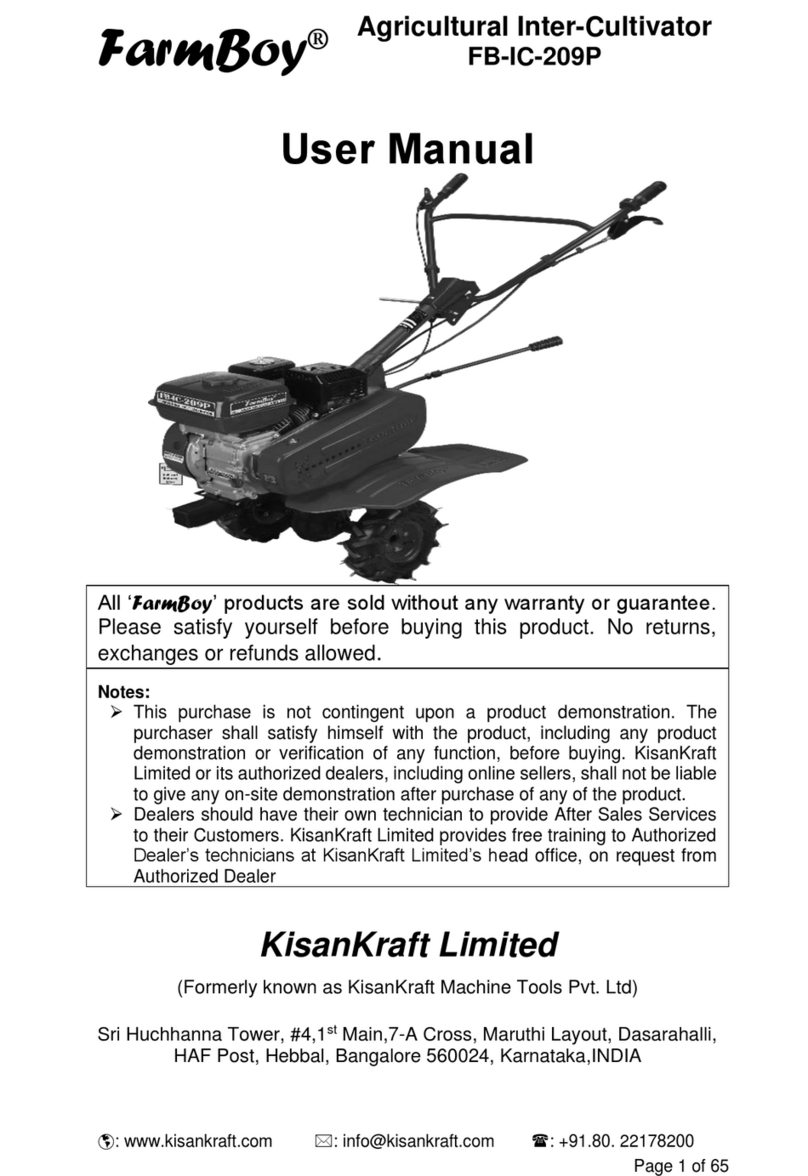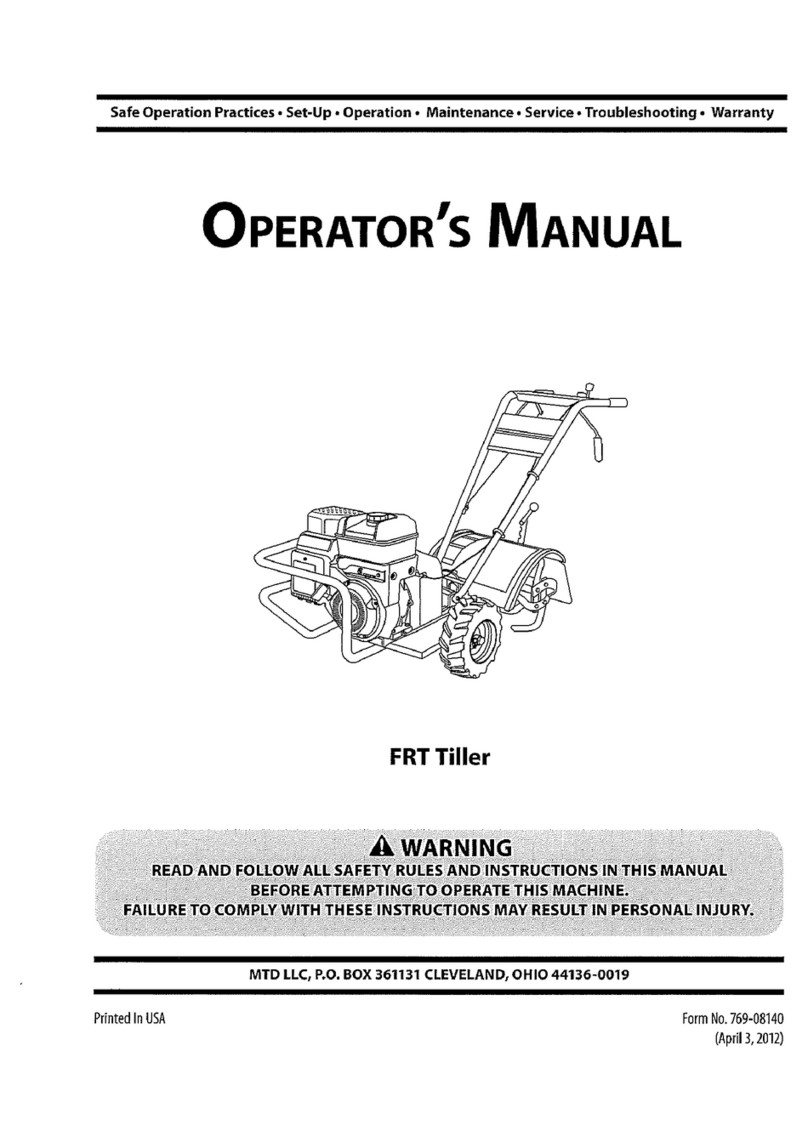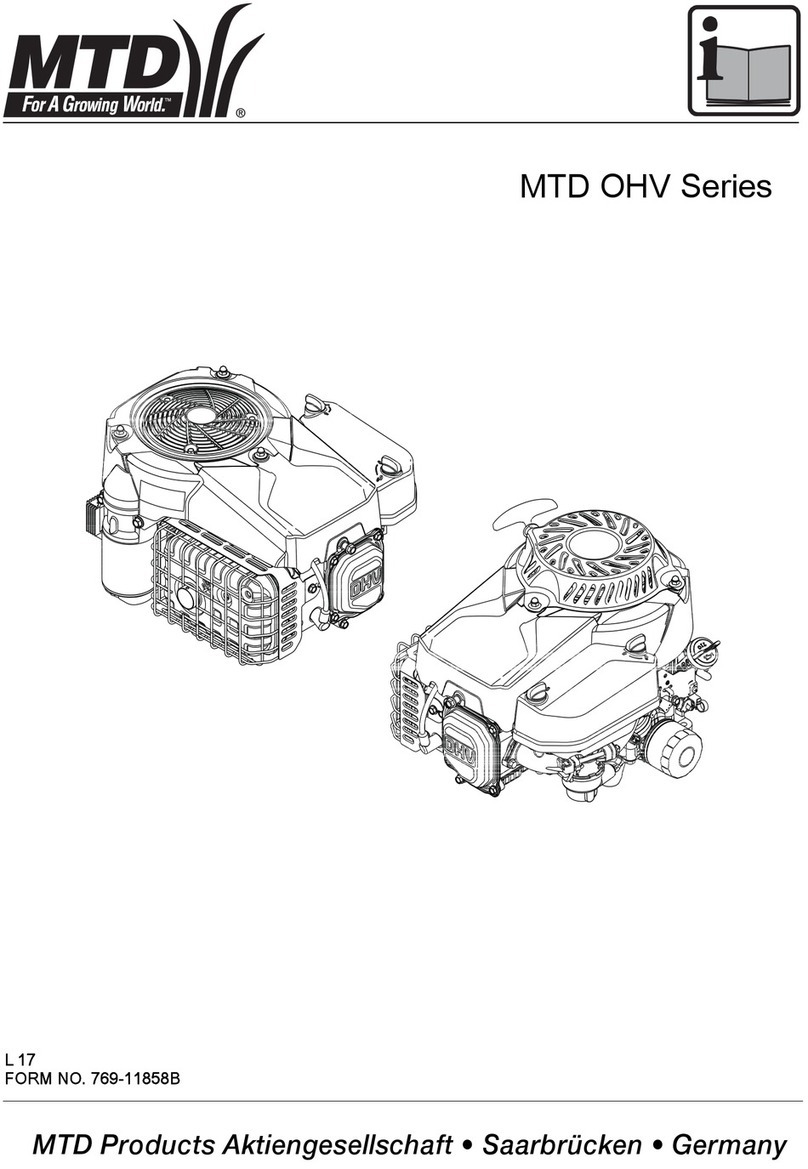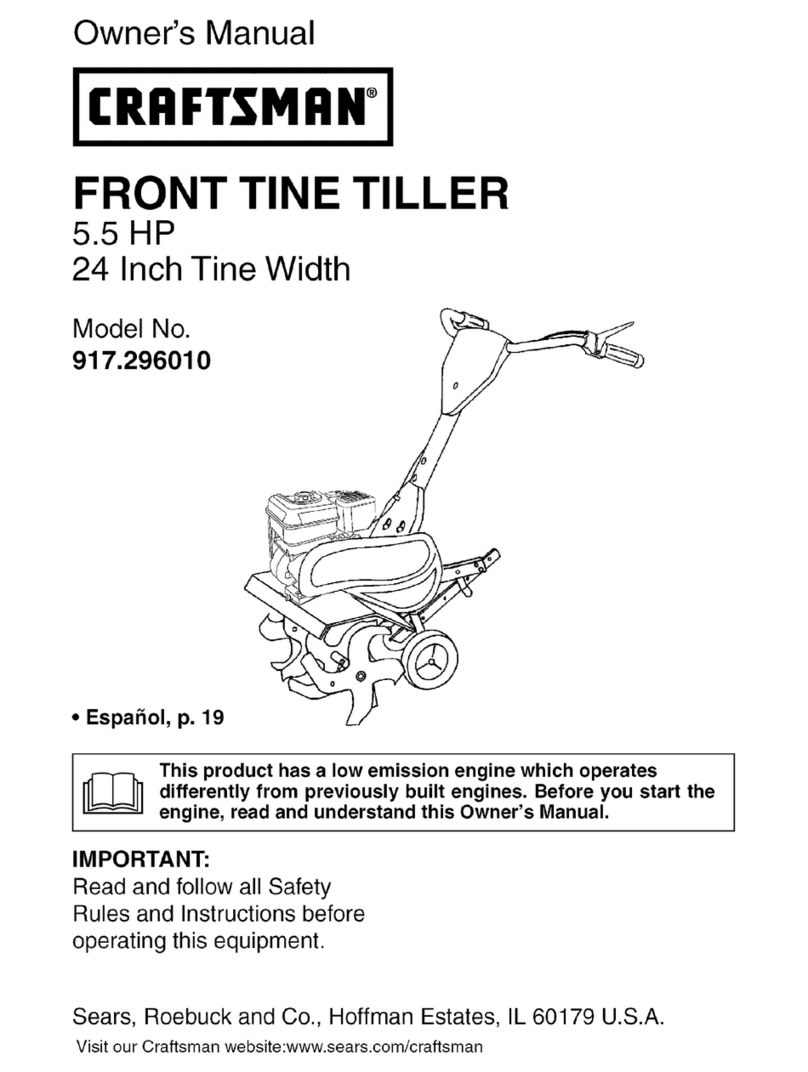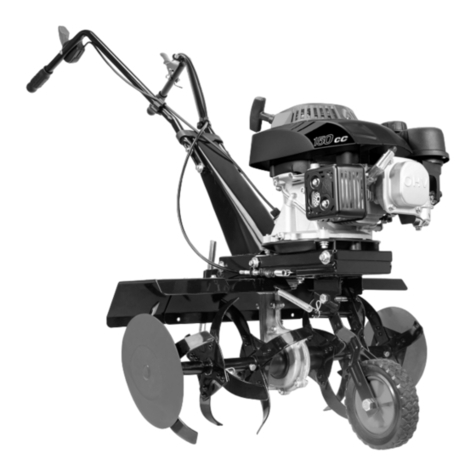
Section1: Safety
8. Beforecleaning, repairing, or inspect=
ing, stop the engineand makecertain atI
moving parts havestopped. Disconnect
the spark piug wire and prevent it from
touching the spark piug to prevent acci=
dentaIstarting.
9. The flap on thetine hood must be
down when operatingthe tiiier, unless
using the Hiiier/Furrower attachment.
10. Neverusethe tiiier unless proper
guards, piates,or other safety protective
devicesare in place.
11. Do not run engine in an enclosed
area.Engineexhaustcontains carbon
monoxide gas, a deadlypoison that is
odorless, coloriess, and tasteless.
12. Keepchildren and pets away.
13. Neveroperatethetiiier underengine
power if the WheeISpeedLeveris in the
FREEWHEELposition. In FREEWHEEL,
the wheels wiii not hold thetiiier backand
the revoiving tines could propei the tiiier
rapidly, possibty causing ioss of controi.
AIwaysengagethe WheetSpeedLeverin
either FASTor SLOWposition before
starting the engine or engaging thetines
with the WheeIs/Tines/PTODrive Lever.
14. Be aware that the tiller may unexo
pectedlv bounce upward or jamp
forward ifthe tines should strike
extremely hard packed soil, frozen
ground, or buried obstacles like large
stones, roots, or stumps, ff in doubt
about the tilling conditions,always use
the following operating precautions to
assist you in maintaining control of the
tiller:
a. Walk behind and to one side of the
tiller, using one handon the han-
dlebars. Relax your arm, bnt rise a
secnre handgrip.
b. Use shallower depth regulator
settings, working gradually deeper
with each pass.
c. Use slower wheel, tine and engine
speeds.
d. Clear the tilling area of all large
stones, roots and other debris.
e. Avoid using downward pressureon
handlebars.If need be, use slight
npward pressure to keepthe tines
from digging too deeply.
f. Before contacting hardpacked soil
at the end of a row, reduce engine
speed and lift handlebarsto raise
tines out of the soil.
g. Jnan emergency, stop tines and
wheets byshifting the
WheelsiTinesiPTO Drive Lever
intoNEUTRAL.tf you can not
reach the lever or havelostcontrom
of the tiller, let go of the handle=
bars and aHcontroms,go not
attempt to restrain the tiller.
15. Donot overioadthe tiiier's capacity by
attempting to till too deeplyat too fast a
rate.
16. Neveroperatethe tiller athigh
transport speedson hard or slippery
surfaces. Look behind and usecarewhen
backing up.
t7. Donot operatethetiiier on a slope
that istoo steep for safety. Whenon
slopes, slow down and makesure you
havegood footing. Neverpermit the tiiier
to freewheel down slopes.
18. Neverallow bystanders near the unit.
19. Only useattachmentsand accessories
that areapproved bythe manufacturer of
the tiller.
28. Usetiiier attachments and acces-
sories when recommended.
21. Neveroperatethe tiller without good
visibility or iight.
22. Neveroperatethe tiiier if you are
tired, or under the influence of alcohol,
drugs or medication.
23. Operatorsshali not tamper with the
engine-governor settings on the machine;
the governor controis the maximum safe
operatingspeedto protect the engineand
ali moving parts from damagecausedby
overspeed. Authorized serviceshail be
sought if a problemexists.
24. Donot touch engineparts which may
behot from operation. Letparts cool
downsufficiently.
25. POBON/OANGER--CAUSES
SEVEREBURNS.Thebattery on electric
start models contains suifudc acid. Avoid
contact with skin, eyesor clothing. Keep
out of reachof children.
Antidotes:
External- Flushimmediately with lots of
water.
Internal- Drink largequantities of water
or milk. Follow with milk of magnesia,
beateneggs or vegetableoil. Calla
doctor immediately.
Eyes- Fiushwith water for 15 minutes.
Getprompt medicai attention.
26. DANGER=BATTERIESPRODUCE
EXPLOSIVEGASES. Keepsparks, flame
or smoking materiaisaway. Ventilate
whencharging battery or using in an
enctosedspace. Alwayswear safety
goggteswhen working near battery.
27. Pieaseremember:You canalways
stop thetines and wheels by releasingati
controis, or by moving the ignition switch
and/orthrottle control leveron the engine
to OFFor STOP.
28. To ioad or unload thetiller, seethe
instructions in Section4 of this Manual.
29. Useextremecaution when backing or
puliing the machinetowards you.
30. Startthe engine carefuiiy according to
instructions and with feet well awayfrom
the tines.
31. Neverpick up or carry a machine
whiiethe engine is running.
32. Whenioading or unioadingthe tiller,
alwaysdisengagetines and usesiower
wheeland enginethrottle speeds. Use
sturdy ramps wideand strong enough to
easiiysupport the tiiier (280-to-325 ibs.
dependingon model) and operator.
Nevergo down ramps in FORWARD
drive--the tiiier couid tip forward,
exposingyou to the tines (which should
be disengaged). Always useREVERSE
driveand backdown ramps. Togo up
ramps, useFORWARDdrive and follow
the tiller.
33, The Forward Interlock SafetySystem
should betested for correct functioning
everytime the tiller or PTOpower unit is
used. SeeSection 4 in this Manual.
34. If using the optional Dozer Blade,
either removethe tine attachment, or
disengagethetines with the Tines/PTO
CiutchLever. Revolvingtines are
dangerous.
